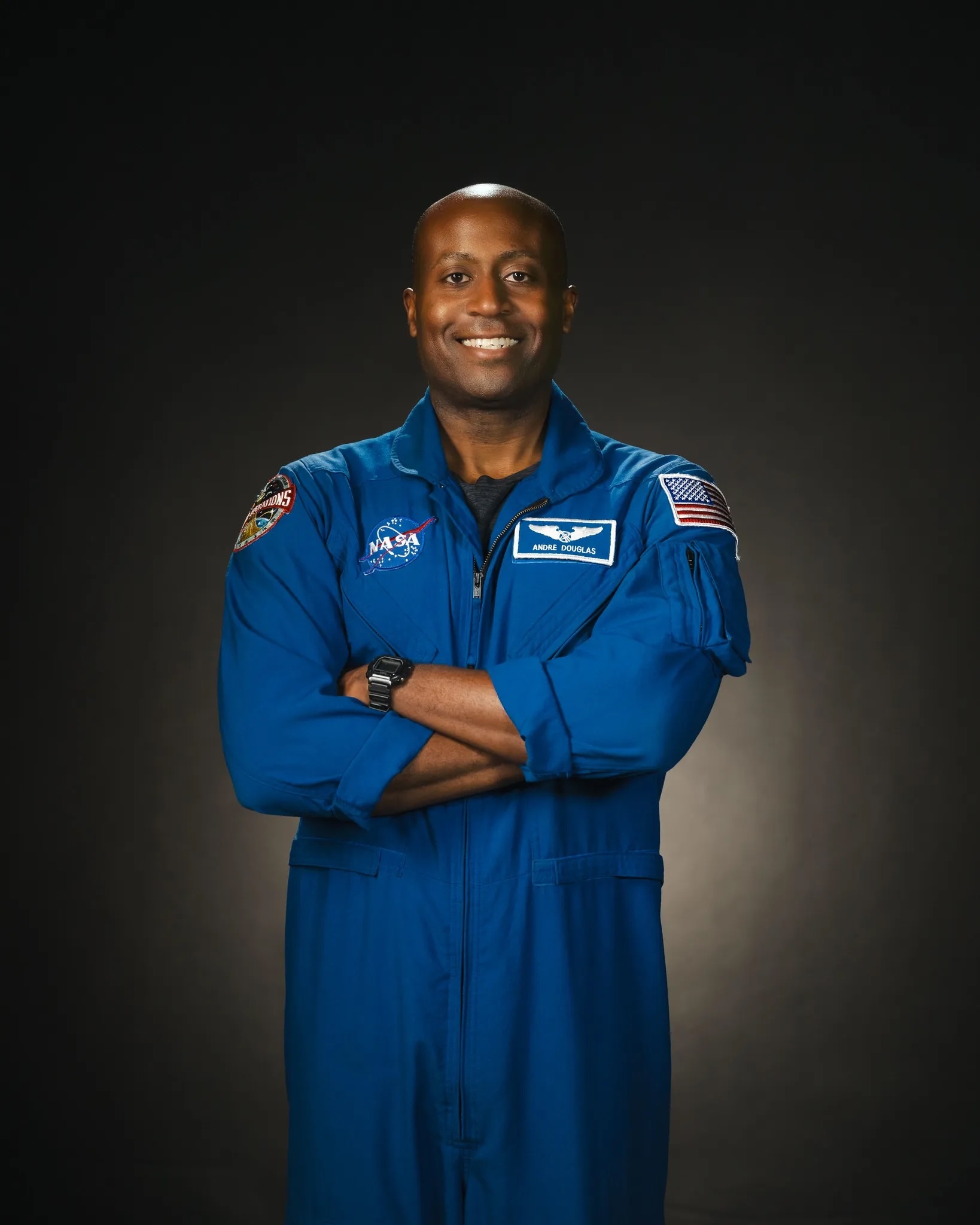5.07.2024

NASA has selected astronaut Andre Douglas as its backup crew member for the agency’s Artemis II test flight, the first crewed mission under NASA’s Artemis campaign.
Douglas will train alongside NASA astronauts Reid Wiseman, Victor Glover, and Christina Koch, and Canadian Space Agency (CSA) astronaut Jeremy Hansen.
In the event a NASA astronaut is unable to take part in the flight, Douglas would join the Artemis II crew.
“Andre’s educational background and extensive operational experience in his various jobs prior to joining NASA are clear evidence of his readiness to support this mission,” said Joe Acaba, chief astronaut at NASA’s Johnson Space Center in Houston. “He excelled in his astronaut candidate training and technical assignments, and we are confident he will continue to do so as NASA’s backup crew member for Artemis II.”
The CSA announced Jenni Gibbons as its backup crew member in November 2023. Gibbons would step into the mission to represent Canada should Hansen not be available.
“Canada’s seat on the historic Artemis II flight is a direct result of our contribution of Canadarm3 to the lunar Gateway. Jenni Gibbons’ assignment as backup is of utmost importance for our country,” said CSA President Lisa Campbell. “Since being recruited, Jenni has distinguished herself repeatedly through her work with NASA and the CSA. She is also a tremendous role model for Canada’s future scientists, engineers, and explorers.”
The selection of Douglas and Gibbons as backup crew members for Artemis II is independent of the selection of crew members for Artemis III. NASA has not yet selected crew members for Artemis flights beyond Artemis II. All active NASA astronauts are eligible for assignment to any human spaceflight mission.
The approximately 10-day Artemis II test flight will launch on the agency’s powerful SLS (Space Launch System) rocket, prove the Orion spacecraft’s life-support systems, and validate the capabilities and techniques needed for humans to live and work in deep space.
More on Artemis II backup crew
Douglas graduated from NASA’s astronaut candidate training program in March 2024. He is a Virginia native and earned a bachelor’s degree in Mechanical Engineering from the U.S. Coast Guard Academy in New London, Connecticut, as well as four post-graduate degrees from various institutions, including a doctorate in Systems Engineering from George Washington University in Washington. Douglas served in the U.S. Coast Guard as a naval architect, salvage engineer, damage control assistant, and officer of the deck. He also worked as a staff member at the Johns Hopkins University Applied Physics Laboratory in Laurel, Maryland, working on maritime robotics, planetary defense, and space exploration missions for NASA. Douglas participated in the Joint EVA and Human Surface Mobility Test Team 5, working with a specialized group that develops, integrates, and executes human-in-the-loop tests, analog missions, and Moonwalks. Most recently, Douglas worked with teams on the development of the lunar terrain vehicle, pressurized rover, lunar Gateway and lunar spacesuit.
Gibbons was recruited as a CSA astronaut in 2017 and completed her basic training in 2020. Since then, Gibbons has continued to serve Canada’s space program and has worked in different positions, including Mission Control as a capsule communicator (CAPCOM) during spacewalks, and commercial spacecraft and daily International Space Station operations. Gibbons holds an honors bachelor’s degree in Mechanical Engineering from McGill University in Montreal. While at McGill, she conducted research on flame propagation in microgravity in collaboration with CSA and Canada’s National Research Council Flight Research Laboratory in Ontario. She holds a doctorate in engineering from Jesus College at the University of Cambridge, England.
Under NASA’s Artemis campaign, the agency is establishing the foundation for long-term scientific exploration at the Moon, land the first woman, first person of color, and its first international partner astronaut on the lunar surface, and prepare for human expeditions to Mars for the benefit of all.
Quelle: NASA
